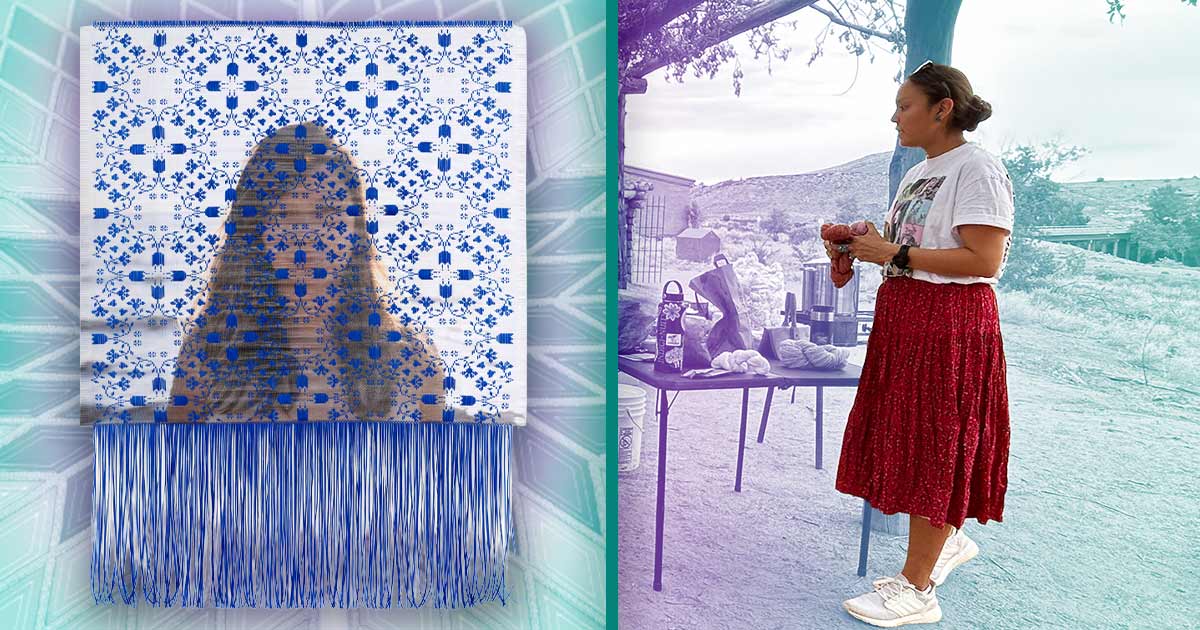
Ancestral Lands, Ancient Traditions
By Sarah Elisabeth Sawyer (Choctaw Nation), Artist in Business Leadership Fellow 2015
Deborah A. Jojola (Isleta Pueblo, Jemez Pueblo) is an expert in a variety of mediums — painting, frescos, printmaking, ceramics, and bookmaking, with a special interest in the process of lithography. She has shown her artwork at the Santa Fe Indian Market (SWAIA) for over 25 years and served as curator of exhibitions at the Indian Pueblo Cultural Center in Albuquerque. As an artist, she has worked nationally and internationally in Hawai’i, Canada, Russia, and Japan.
Deborah is a 2019 First Peoples Fund Cultural Capital Fellow and resides in Albuquerque, New Mexico.
As Deborah reaches in for a scoop of plaster from the bucket, the feel and smell of damp earth brings her a sense of comfort and purpose. She makes plaster from soil she gathers in cultivated fields. After sifting it clean, she adds ash and distilled water.
Most of her mason board panels, which she makes herself, represents tablitas, a traditional Pueblo headdress worn during ceremonies by men and women. Spreading the plaster thinly on the panel boards, she’ll add willows, shells and turquoise stones to create the traditional fresco wall hanging.
Ever since she was young, working with mud has fascinated Deborah. She helped her aunties, in Jemez Pueblo, plaster their adobe homes. That was when she knew she was an artist.
“My mother and Auntie from Jemez Pueblo share memories or reflections of their youth,” Deborah says, “learning from our grandmothers and grandfathers no longer with us about old ways and the understanding of ‘why’ we still continue to keep these traditions.”
Deborah recently received an Artist in Residence at Mesa Verde Historical Site. Living in a hogan, she pursued and researched the environment, soils, minerals, and art forms as she walked the trails of her ancestral lands.
“Literally walking in their footsteps, climbing the ladders to cliff alcoves and cliff dwellings once occupied by many Native families, it became my personal pilgrimage,” she says. “It was very powerful and enlightening. They worked together as a community, there was no I or me. It was we and us.”
With few elders who retain the knowledge of how to make frescoes, Deborah’s role in the community becomes more critical each year.
“My purpose in life is within my artwork, using my art to speak to my people, to teach and to revive a technique that will be lost if not learned and practiced,” she says. “It is critical that art, culture, and ancestral knowledge is passed on from one generation to the next.”
Note: Deborah’s Cultural Capital fellowship was funded through your generous donations during our 2018 Giving Tuesday event. We appreciate everything you do in supporting culture bearers like Deborah. She truly embodies every aspect of how the fellowship is used by Native artists who are committed to carrying on their community’s traditions.






























































































.jpg)






